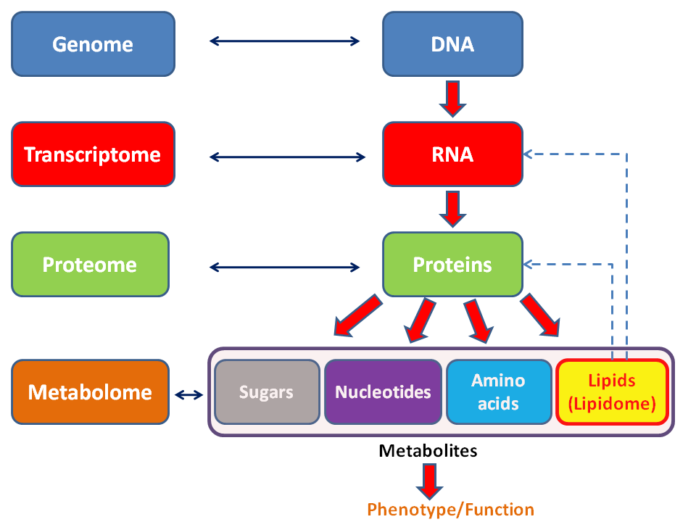Metabolomics—the comprehensive analysis of small molecules (metabolites) in biological samples—has emerged as a transformative field in biomedical research. By profiling metabolites in biofluids such as urine, scientists can detect subtle changes linked to disease onset, environmental exposures, or therapeutic interventions. However, the sheer complexity of the metabolome—comprising thousands of analytes with often overlapping masses—poses a formidable challenge for confident compound identification.
Challenge: Resolving Isoforms and Achieving Sub-ppm Accuracy
Many metabolites share near-identical molecular weights, generating overlapping spectral peaks that blur at conventional mass resolutions. Inaccurate peak separation leads to misassignment of compounds and undermines biomarker discovery. To overcome this obstacle, high-resolution mass spectrometry (HRMS) is essential. Taller, narrower peaks enable tighter mass tolerances in database searches, increasing confidence in putative identifications and reducing false-positive calls.
Innovation: The Xevo™ MRT QTof Mass Spectrometer
Waters Corporation’s Xevo™ MRT QTof instrument brings routine mass resolution up to 100,000 full-width at half maximum (FWHM) and sub-ppm mass accuracy. Coupled to an ACQUITY™ Premier UPLC™ system for ultra-fast, high-efficiency separations, this platform promises to redefine the ceiling for metabolomic clarity. Key features include:
• Dual-polarity electrospray ionization with stepped collision energies for broad fragmentation coverage
• 20 Hz scanning speed to capture chromatographic peaks without undersampling
• StepWave™ ion transmission to maximize sensitivity for low-abundance metabolites
Study Design: A Urine Metabolomics Case Study
To demonstrate the MRT QTof’s capabilities, researchers analyzed a commercially available urine set (NIST® SRM® 3671), comprising pooled samples from non-smokers, passive smokers, and active smokers. Each pool underwent minimal preparation—dilution with ultrapure water and an LCMS reference standard—before triplicate injections, ensuring reproducibility and preserving the native matrix.
Chromatography and Data Acquisition
Analyses employed a 1 µL injection on a C18 UPLC column using a rapid 10-minute gradient from 99% aqueous mobile phase to high organic. The high flow rate (0.6 mL/min) and column temperature (45 °C) delivered sharp, well-resolved peaks across the 50–1200 Da mass range. Data were collected in MSE continuum mode, capturing both precursor and fragment information in a single run.
Data Processing: MARS Software and HMDB Database
The Mass Analytica MARS platform facilitated automated peak picking, statistical analysis, and putative annotation against the Human Metabolome Database (HMDB). Principal component analysis (PCA) and orthogonal partial least squares discriminant analysis (OPLS-DA) separated the three smoker phenotypes, confirming robust analytical stability and minimal batch drift.
Results: Unprecedented Resolution and Biomarker Discovery
High-Resolution Peak Profiles
An extracted ion chromatogram (XIC) for m/z 328.10278—putatively acetaminophen glucuronide—yielded a single, narrow peak at 1.63 minutes. The MRT QTof measured this ion at ~78,000 FWHM with 0.09 ppm mass error, while its major fragment (m/z 152.07060) appeared at ~58,000 FWHM and -0.46 ppm. Such precision eliminates ambiguity among closely spaced isoforms.
Biomarker Identification Across Smoker Cohorts
The workflow identified over 1,300 features with <1 ppm mass error. Comparative analysis revealed:
• Nicotine metabolites (nicotine-1′-N-oxide, hydroxycotinine) present only in passive and active smoker pools, confirmed by sub-ppm accuracy and matching MS/MS patterns.
• Carbamazepine and its 10-hydroxy metabolite detected exclusively in the active smoker pool, suggesting co-medication or seizure management among donors.
• Pyridoxine (vitamin B6) significantly enriched in non-smoker urine, hinting at diet-related deficiencies in smokers and the role of oxidative stress in nutrient depletion.
• Acetaminophen glucuronide in passive and active smokers, reflecting over-the-counter analgesic use.
Statistical Trends and Biological Insights
Abundance trends plotted across the three pools confirmed dose-dependent increases in nicotine metabolites and stable pyridoxine levels in non- and passive smokers, underscoring the MRT QTof’s ability to track subtle biochemical gradients.
Expert Commentary: Implications for Disease Research
“Sub-ppm mass accuracy and high resolution are game-changers for metabolomics,” says Dr. Olivia Frost, Director of Translational Mass Spectrometry at a leading medical center. “We can now distinguish near-identical compounds that were once inseparable, accelerating biomarker validation in cancer, neurology, and environmental health.”
Clinical Potential: Toward Personalized Medicine
By reliably identifying drug metabolites, nutrients, and pollutants in a single run, next-generation MS platforms pave the way for personalized diagnostic panels. For example, tracking vitamin deficiencies or monitoring therapeutic compliance could become routine in outpatient settings.
Environmental Monitoring and Public Health
Beyond clinical specimens, the same technology can analyze water samples, detecting industrial contaminants or algal toxins at low parts-per-billion levels. High resolution ensures confident compound assignment in complex environmental matrices.
Future Directions: Scaling Up and Collaborative Networks
The AAO-HNSF guideline model underscores the importance of evidence-based workflows. Similarly, metabolomics consortia are calling for standardized protocols and shared spectral libraries. The MRT QTof’s compatibility with open formats and cloud-based databases will facilitate cross-laboratory validation and large-scale epidemiological studies.
Remaining Challenges and Research Needs
While the platform excels in resolution, key areas warrant further investigation:
• Automation of compound identification to reduce manual curation time
• Integration with ion mobility for an additional dimension of separation
• Standardized quantification methods to translate relative abundances into absolute concentrations
Conclusion: A New Era for Metabolomic Discovery
The introduction of the Xevo™ MRT QTof mass spectrometer into routine metabolomics represents a leap forward in analytical capability. High mass resolution, sub-ppm accuracy, and rapid UPLC separation enable researchers to dissect complex biofluids with unprecedented clarity. Early applications in urinary nicotine studies showcase robust biomarker identification and detailed phenotypic discrimination. As laboratories adopt next-generation MS and harmonize workflows through platforms like MARS, the promise of metabolomics—in disease diagnosis, personalized therapy, and environmental health—moves closer to widespread clinical and regulatory implementation.
READ MORE: Brooke Bellamy Breaks Silence in First Vlog Since Plagiarism Allegations
